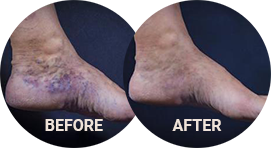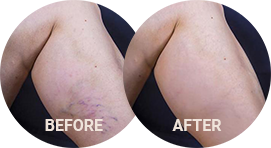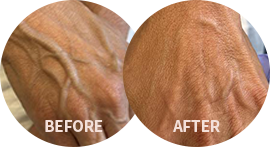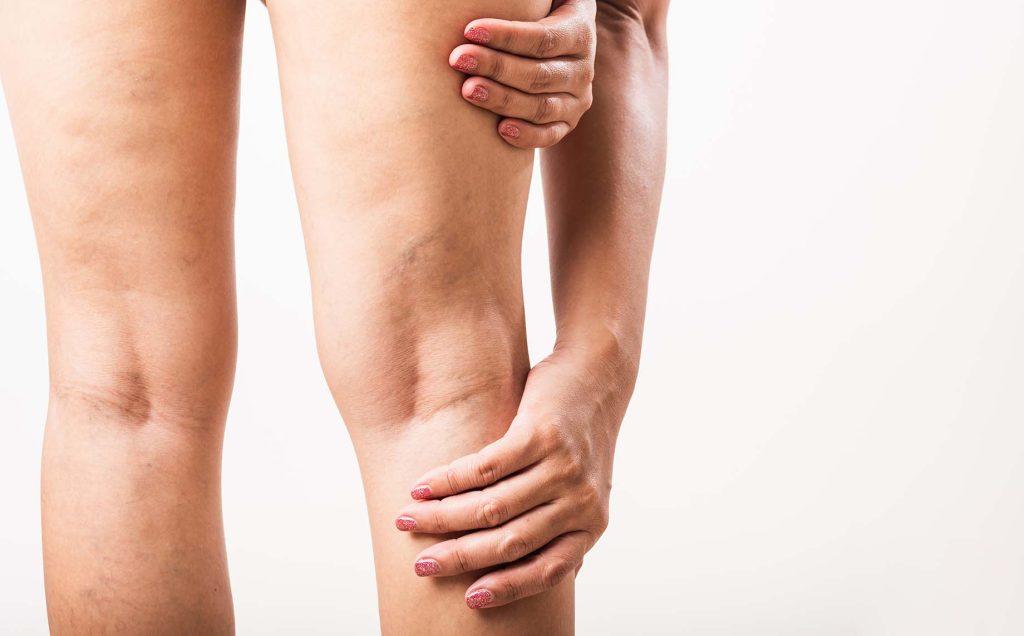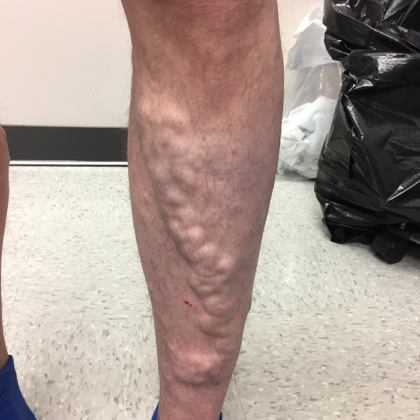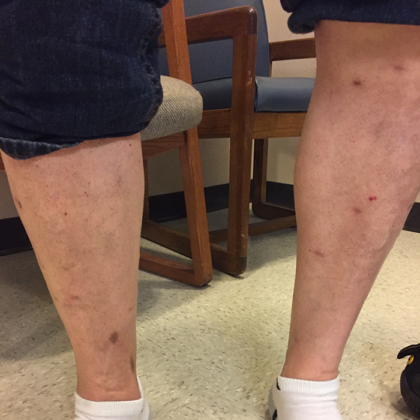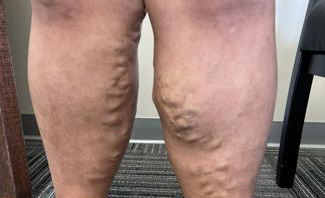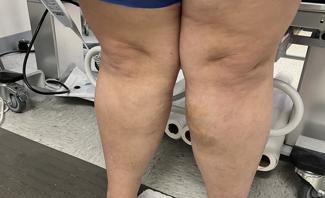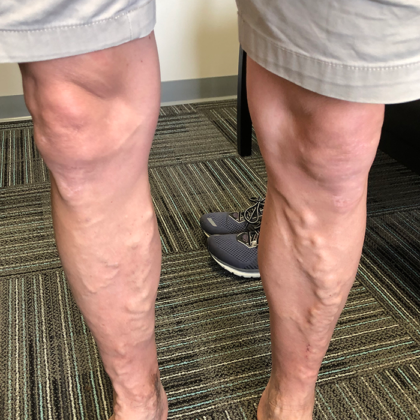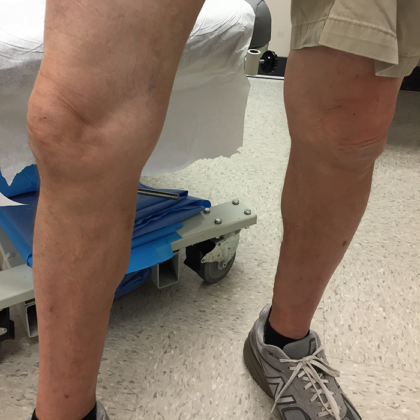Venous insufficiency is a condition in which the valves within veins function poorly. It occurs in vascular structures that are farther away from the heart, such as those in the lower legs. And, for many people, it can cause changes in the appearance of the legs, lead to discomfort, and in some cases, may signify the start of a more serious condition.
The signs of venous insufficiency can creep up slowly. Though the physical symptoms of the condition can be mild to start with, over time it can result in mental distress related to the appearance of the legs, life-limiting symptoms of pain and discomfort in the limbs, and even chronic ulceration and soft tissue changes. (1) So what causes venous insufficiency? And how do we treat it?
Dr. David Naar is a leading vascular surgeon in the Cleveland area. At Premier Vein Center in Westlake, Ohio, he specializes in treating venous insufficiency, varicose veins, and venous ulcers. If you suspect you have venous insufficiency in the legs, please reach out to us to arrange a personal consultation with Dr. Naar. Call us directly at (440) 641-0433 or fill out a simple form for more information.
Contents
Before and After Photos
About Venous Insufficiency
Problems with the vascular system and venous disease tend to worsen with age. Larger, gnarled varicose veins can cause problems for many. But initially, even if varicose veins are not present, a patient may seek treatment to relieve uncomfortable symptoms which, unbeknown to them, are caused by venous insufficiency.
Venous insufficiency occurs when the walls and valves of the veins that control blood flow in the vein become thinner and weakened.
Signs of Venous Insufficiency:
- Swelling in the leg, ankle, or foot
- Leg pain, throbbing and discomfort
- Leg heaviness
- Aching and tiredness
- Cramps and spasms
- Skin flaking and itching
- Brown, leathery ankle skin
As venous insufficiency progresses, it can lead to varicose veins and venous ulcers. Varicose veins are twisted, gnarled veins in the lower extremities that are caused by weak vein walls and valves. In other words, they are caused by venous insufficiency. Similarly, venous ulcers are lesions that do not easily heal that are caused by blood pooling due to poorly controlled blood pressure in the vein.
The Valves in Our Veins
Veins direct blood flow back to the heart and lungs for reoxygenation. They work against gravity to ensure that blood pressure remains stable throughout the vascular system. The way they do so is through a system of one-way valves. These valves are bicuspid, meaning they are two flap-like structures that open and close to direct blood flow.
One of the reasons why venous insufficiency occurs more frequently in the legs than in any other area of the body is because the lower extremities are farther away from the heart. The veins in the legs must work harder against gravity to regulate blood flow back up to the heart. And unfortunately, they don’t always work as well as they should.
Healthy Veins vs. Damaged Veins
A damaged vein looks very different compared to a healthy vein. It also functions inefficiently. In a normal vein, there is normal blood flow and normal valve operation, and blood flows back toward the heart without interruption. But in a damaged vein, a damaged or deformed valve can cause reverse blood flow. This is known as venous reflux. When venous reflux occurs, it can lead to a weakening of the walls of the vein, inflammation, and vein dilation. This can indicate the early stages of varicose vein development.
Chronic Venous Insufficiency
Once venous insufficiency has crossed a certain threshold, a patient may be diagnosed with chronic venous insufficiency (CVI). Using a Doppler instrument and ultrasound, a clinician can determine CVI by observing blood flow in the area. Studies have shown that CVI is underdiagnosed in the general population, and that treatment is necessary to prevent further complications. (2)
What Happens When Venous Insufficiency is Not Treated?
As well as causing persistent pain and discomfort, chronic venous insufficiency can lead to a number of other symptoms, some of which can be serious.
- Hemorrhage
- Superficial thrombophlebitis (inflammation)
- Blood clots
- Progressive skin changes and damage
- Ulceration
- Joint stiffness (1)
Risk factors for CVI
- Family history
- Being female
- Increasing age over 30
- One or more blood clots in superficial or deep veins
- Standing for long periods
- Heavy lifting
- Multiple pregnancies
- Limited physical activity
- High blood pressure
- Obesity
- Diagnosis of CVI (2)
Lifestyle Changes for Venous Insufficiency
If you’re concerned you are at a higher risk of developing chronic venous insufficiency, one of the most important things you can do is stay as active as you can. If you have limited mobility, taking a regular daily walk is better than no exercise at all. Avoid long periods of sitting or standing where possible. Exercise regularly, and eat a healthy, low sodium diet. Excess weight can also put pressure on the vascular system, so work to maintain a healthy weight. Dr. Naar will be happy to provide further information regarding lifestyle changes at your personal consultation.
How is Venous Insufficiency Treated?
Venous insufficiency can be treated in a variety of ways, and the choice of treatment usually depends on the individual. Where venous insufficiency is in its earlier stages, there may be no need for extensive treatment. However, where it has progressed to CVI and varicose veins that are reducing quality of life, more concerted medical intervention is recommended.
Compression Therapy
Compression therapy is a form of conservative management in the treatment of vascular disease. It does not involve surgery, though it may be used in conjunction with a surgical procedure where necessary. By wearing a specially designed compression garment, patients can reduce the symptoms associated with venous insufficiency. Medical compression therapy involves the patient wearing a special boot or leg garment that provides mechanical compression to the area.
Sclerotherapy
Sclerotherapy is one of the most effective treatments for varicose veins. Where venous insufficiency has led to varicose veins, a doctor can administer a solution directly into the vein. This solution is called sclerosant. The sclerosant irritates the wall of the vein and causes it to close. The body redirects blood flow immediately and, over time, the treated vein is reabsorbed by the body. Sclerotherapy with liquid and foam sclerosants is a safe and effective way to treat subcutaneous varicose veins. (3)
Other Treatment Modalities
Depending on your needs, and the severity of your venous insufficiency, you may require a more involved treatment. If you have CVI, many varicose veins, or veins that are causing significant disruption, speak to Dr. Naar about radiofrequency venous ablation, endovenous chemical foam ablation, and ambulatory phlebectomy procedures.
Candidates for Vein Treatment
Candidates for the treatment of venous insufficiency are people who may be experiencing physical and/or mental discomfort due to its presence. Many people come to Dr. Naar after experiencing a decline in the aesthetic appearance of their legs or feet. For some people, varicose veins can cause aches and pains, and may even prevent them from performing daily tasks. So, where varicose veins and venous ulcers are causing discomfort, patients should seek medical care to help them find relief.
Personal Consultation
Dr. Naar will meet with you to discuss your needs at his office in Westlake, Ohio. During your visit, we will ask you to give us some details about your health and ask you to fill out some intake forms. Once this is complete, Dr. Naar will invite you to tell him about what brings you to us. He will perform a physical examination of the area and ask you some questions about your comfort levels. He will then formulate an effective treatment plan for your venous insufficiency.
Cost of Sclerotherapy in Westlake, OH
The cost of treatment for venous insufficiency varies depending on the treatment type. Dr. Naar will assess your needs in person at your personal consultation after he has performed a comprehensive evaluation of your veins. Call (440) 641-0433 or send us a message via our online form to make an appointment and find relief from the difficulties of venous insufficiency.
Read Dr. Naar’s blog for more information about vein treatment.
FAQ
Is venous insufficiency serious?
Venous insufficiency describes a condition where the valves in the veins of the leg do not work correctly. Venous insufficiency is not considered a serious health threat, but it may lead to uncomfortable symptoms such as leg swelling, itching, cramps, aches, and leg heaviness.
How long does treatment for venous insufficiency take?
The length of your treatment depends on your needs, and which type of treatment is chosen. In many cases, a combination of therapies is used to achieve the most effective results. Commonly, sclerotherapy and compression therapy are used as complementary treatments.
References
- Nicholls SC. Sequelae of Untreated Venous Insufficiency. Seminars in Interventional Radiology. 2005;22(3):162-168. https://www.ncbi.nlm.nih.gov/pmc/articles/PMC3036289/
- 5. SPIRIDON M, CORDUNEANU D. Chronic Venous Insufficiency: a Frequently Underdiagnosed and Undertreated Pathology. Mædica. 2017;12(1):59-61. https://www.ncbi.nlm.nih.gov/pmc/articles/PMC5574075/
- Rabe, E., Breu, F. X., Flessenkämper, I., Gerlach, H., Guggenbichler, S., Kahle, B., Murena, R., Reich-Schupke, S., Schwarz, T., Stücker, M., Valesky, E., Werth, S., & Pannier, F. (2020). Sclerotherapy in the treatment of varicose veins. Der Hautarzt, 72(S2), 23–36. https://doi.org/10.1007/s00105-020-04705-0


